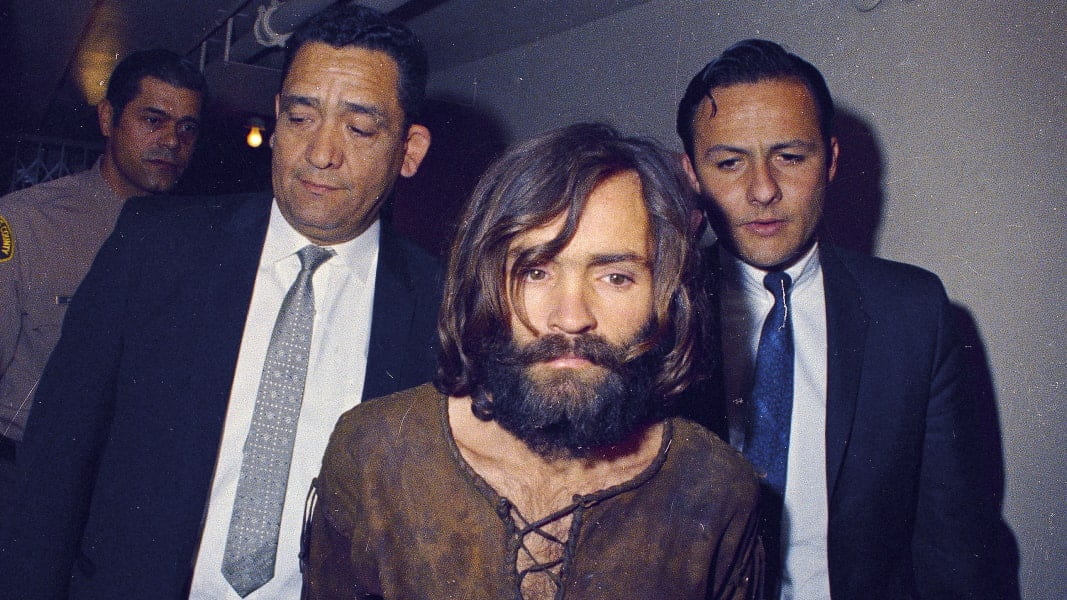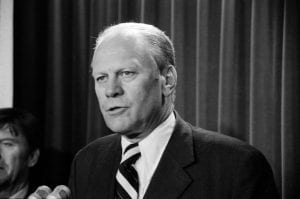Cults or New Religious Movement (NRM’s) invaded the American consciousness in the 60s and 70s, with many significant NRM’s entering the headlines. By and large the acceleration of these movements were caused by the social changes occurring; leaving many people looking for answers and fulfillment. These answers came in the form of spiritual and religious guidance in the wake of events, such as the Vietnam War and the Civil Rights Movement.
The negative connotations of the term ‘cult’, directed intellectual’s to describe them as New Religious Movements (NRM’s), a term that I will be using as replacement. The Manson Family and its charismatic leader, Charles Manson, was in large part responsible for defining the negative connotation of ‘cults’.

The Manson Family was an active commune and NRM in the late 1960s and early 1970s. Charles Manson and his devoted members captured global attention for their practices, beliefs, and infamous celebrity murders in this period. These acts were fuelled by manipulation and hallucinogenic drugs at the hands of Charles Manson. And committed by Manson Family members who mostly consisted of young middle class women, coined the “Manson Girls”. The Manson Girls, became an infamous figure in pop-culture, almost transcending Charles Manson.
“Manson had a dynamic personality with an ability to read a person’s weaknesses and manipulate them” – Gary Stromberg
The most prevalent characteristic of a New Religious Movement is its leader, on the top of the hierarchy there is a charismatic and godlike figure. Charles Manson, was that individual, known for his innate ability to influence and control the minds of the vulnerable. With these characteristics he formed a tight grip around his members, leading them down a dark path.
His leadership and influence attracted members to join the Manson Family. Members described him as “animated and charismatic”, which he manipulated to attract recruits into the “family”. In these hopes, he preyed on women who were entering cross-roads in their lives – an element of recruitment for a majority of NRM leaders. Whether it was moving out of state, dropping out of school, a falling out with family, or a lack of purpose; Manson would use these vulnerabilities to his advantage. The 1960s were also a polarizing era, characterized by psychedelic drug use, sexual exploration, racial equality, the hippy movement, and activism. Manson’s lifestyle and ideology echoed this era, and helped cultivate his following and attract vulnerable people.
The members of The Manson Family, visualized Charles Manson as a messiah-like figure. By virtue of this, his followers saw themselves as a superior elite that had a “higher purpose”. And Manson preached that he was the reincarnation of a Jesus-like messiah that would rule the world in the after-math of a race war, which he referred to as “Helter Skelter”. Helter Skelter, an imaginary Armageddon, was the catalyst in the infamous murders committed by The Manson Family. A futile attempt to frame the murders of white celebrities, on black people – and set off a race war. The Manson Family’s fanciful higher purpose, god-like leader, and doomsday, are all common themes in NRM’s; as it creates a powerful attraction for people who are looking for direction.
“No ones joins a cult, they join a religious or political movement, with people they like” – Rebecca Moore

Charles Manson became a central and dependent figure for his followers, and with the family’s growing success, it provided a community. This community was solidified when the group moved to Spahn Ranch. A decrepit ranch in California, isolated from society, and used to indoctrinate The Manson Family. Creating a community secluded his members from the ‘real world’, and severed ties with the establishment, family, and any ideas that did not conform with Manson’s. In this period, Manson started “brainwashing” members with psychedelic drugs like LSD. And during these experiences, he would preach about his strange beliefs, submerging his followers into his imaginary world. Isolating and brainwashing members is a fundamental characteristic in New Religious Movements, and is manipulated to rationalize their strange beliefs.
The activity of The Manson Family came to a screeching halt after the conviction of Charles Manson. Manson was the beating heart of the family, attracting members with a sense of community, counter-culture ideals, charisma, and purpose. Moreover, The Manson Family’s strange beliefs, messiah-like leader, isolation from society, and brainwashing, defines the prototypical New Religious Movement. And despite the ambitions of world-domination never coming to fruition, Manson’s legacy as an unhinged and manipulative cult leader lives in infamy.









